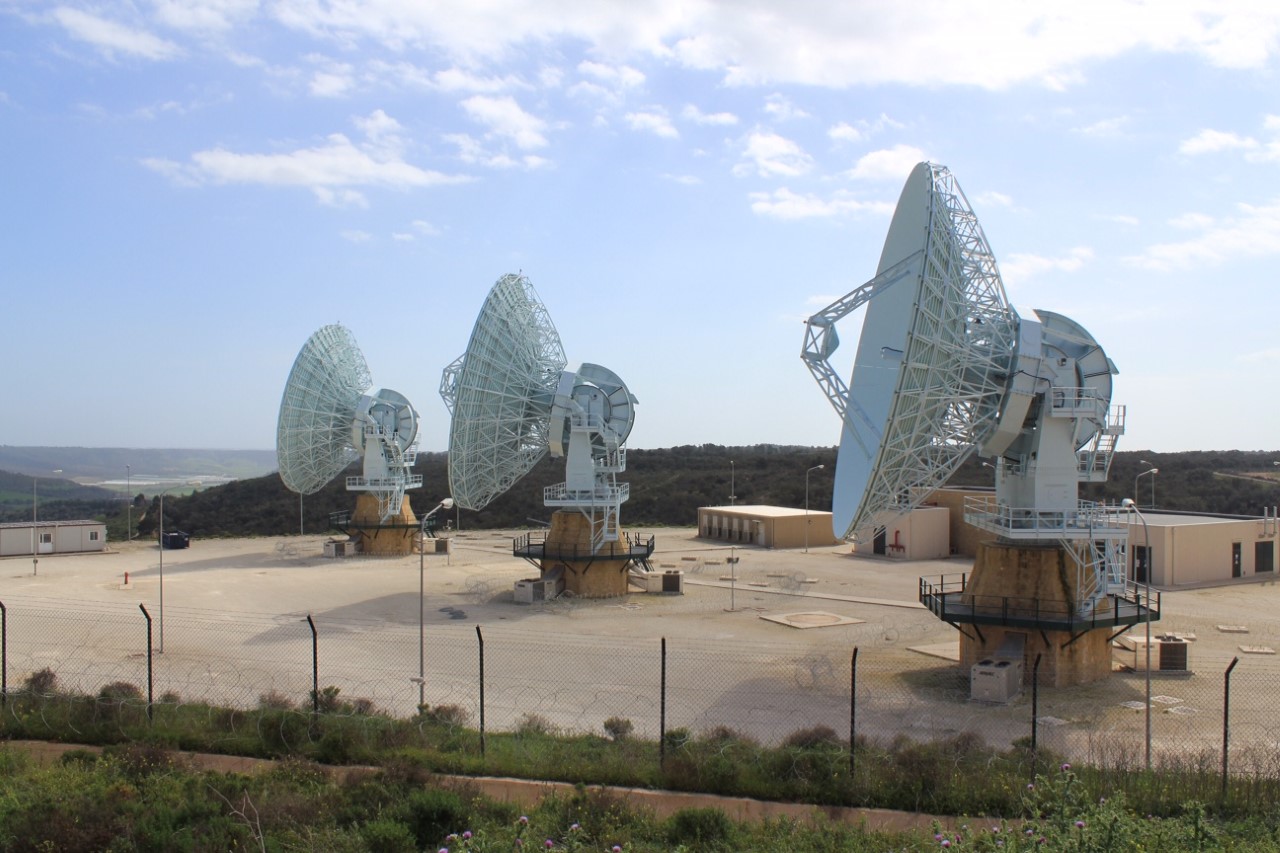
The most powerful version of the United Launch Alliance Atlas V fleet is set for liftoff on 2.5 million lbs thrust June 24 from Cape Canaveral’s Launch Complex 41, carrying the last of five Lockheed Martin /Navy Mobile User Objective System (MUOS) communications spacecraft into geosynchronous transfer orbit.
FOLLOW our on-site reporting and MUOS-5 Launch Tracker for regular updates, as well as LIVE coverage on launch day.
Many hurdles remain, however, before the MUOS system can become fully operational, one involving the Italian court system that is threatening the global connectivity of the system and its coverage, specifically over the Middle East, Africa, and Europe—key U.S. military operational areas.
The 206-foot-tall Atlas V 551 version with five solid rocket boosters, its Russian RD-180 oxygen/RP-1 engine, a 5-meter faring and single engine Centaur upper stage, is targeted for launch at 10:30 a.m. EDT at the opening of a 44-minute window that extends to 11:14 a.m. EDT.
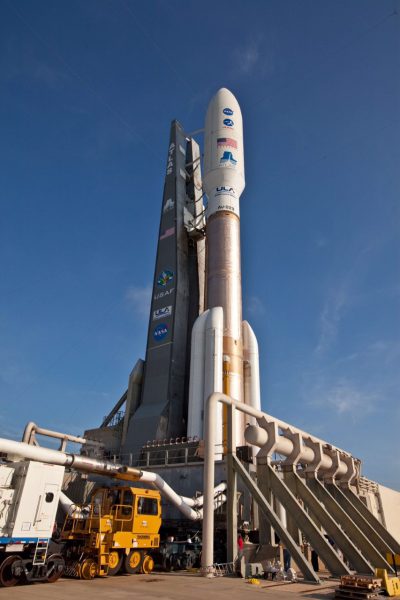
The mission is the first for the Atlas V since a March 22 space station resupply mission came perilously close to failure when an Atlas Mixture Ratio Control Valve malfunctioned, causing the Atlas to shut down six seconds early, leaving the oxygen/hydrogen centaur upper stage to fire earlier and longer than planned to save the mission (see AmericaSpace June 15). Although the malfunction caused a several week delay in Atlas operations, a relatively simple modification to the valve has been made to enable the Atlas to return to flight.
MUOS-5 is the fifth and final spacecraft that, along with four major ground stations and thousands of receivers, is revolutionizing secure communications for mobile military forces from submarines, to soldiers, to strategic and tactical aircraft.
Users with MUOS terminals will be able to seamlessly connect beyond line of sight around the world and into the Defense Dept.’s Global Information Grid, including operations up to top secret communications and imagery.
The $7-billion program of satellites, major ground stations, and user radios will enable simultaneous crystal clear voice and mission data over a secure high speed Internet Protocol system.
Like the first four spacecraft launched since 2012, MUOS 5 has two payloads to support both new Wideband Code Division Multiple Access (WCDMA) waveform capabilities as well as “legacy” Ultra High Frequency UHF transmissions used by many mobile forces today.
The 15,000-lb satellite carries a Harris 17.7-foot-diameter antenna to communicate with existing UHF users operating with older UHF spacecraft and a 46-foot-diameter Harris reflector for the new WCDMA communications capabilities. The spacecraft has solar arrays spanning 94 feet.
More than 55,000 currently fielded radio terminals can be upgraded to MUOS compatible, with many of them requiring just a software upgrade.
Once fully operational, MUOS will provide users with 16 times more communications capability than the legacy system it will eventually replace.
The new MUOS capability to provide seamless communications deep within polar regions will be especially important to Strategic Command/Navy ballistic missile and attack submarine operations as well as Air Force B-2 stealth bomber and B-21 advanced stealth bomber capability to penetrate Russia and China in extreme global crisis situations.
MUOS has demonstrated communications capability within 30 miles of the North Pole, said Dr. Mark Woempner, Lockheed Martin MUOS Program Manager. But he says a number of issues need to be resolved before the system is fully operational. They are:
Italian ground station
There are four large control stations for the MUOS fleet—in Hawaii, Virginia, Australia, and Italy. They are impressive facilities, each equipped with three large dish antennas. The Italian station is in Niscemi, Sicily, where vocal townspeople have taken the Italian Defense Ministry to court over their fear that the antennae could cause environmental damage and physical harm to people and animals. The dispute has closed the station since April 2015.
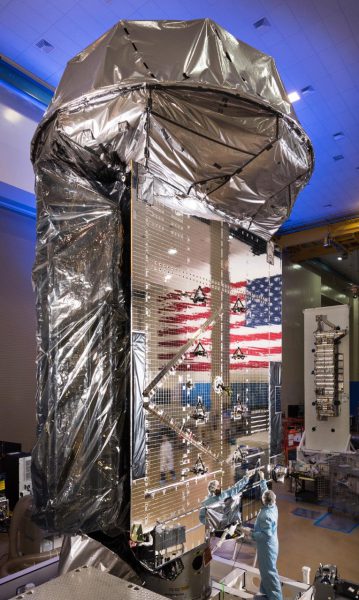
This is a very serious issue to the U.S. Defense Dept. because the Italian station is critical for MUOS communications across the Middle East, Africa, and Europe. There is hope the situation can be resolved as early as late July, when the next court proceedings are scheduled.
Multi Service Test and Evaluation Report
During late 2015 the spacecraft’s WCDMA waveform capabilities were thoroughly tested, but the final report from the evaluation teams has not yet been received by the MUOS project, said Navy Captain Joe Kan (pronounced Con) Navy program manager for the project. Until that happens, Kan said he can not comment, but believes there will be positive assessments on system progress, but still tasks need to be completed.
Capt. Kan said the WCDMA waveform is now working, however, compared to early 2015 when Christina T. Chaplain, GAO’s Director of Acquisition and Sourcing, told the Senate Armed Services strategic forces subcommittee that more than 90 percent of the MUOS capabilities remained underutilized.
Key receiver tests and certifications
Three important MUOS terminals are being certified now. A Navy digital modular radio, the first “software defined” operational radio, continues tests, but is already on board 12 Navy submarines and ships.
In addition an Army PRC-155 two channel software defined System is undergoing testing, along with a Lockheed Martin PPRC-117G system being tested for transmission of Top Secret material and communications.
As part of the recovery from the propellant valve malfunction and the comprehensive checkout of the Atlas V 551, Dr. Walt Lauderdale, MUOS-5 Mission Director at the Air Force Space and Missile Systems Center, said the project completed 156 hardware pedigree reviews and performed “data package reviews” on an additional 334 hardware items.
He said the ULA team performed 167 launch vehicle verification tasks and 66 spacecraft-to-launch vehicle interface verification tests.
Following liftoff, the five SRBs will be separated at 1 minute, 48.7 seconds, followed by nose shroud separation then Atlas RD-180 shutdown and staging at 4 minutes, 31.6 seconds.
After separation of the Atlas stage, the Centaur upper stage will place MUOS-5 into a 2,074 nautical mile x 19,280 nautical mile transfer orbit. The spacecraft’s mass will require three firings of the Centaur’s Aerojet Rocketdyne RL10B-2 engine with nearly 25,000 lbs thrust to achieve that transfer orbit.
About eight firings of the spacecraft’s own hydrazine engine will then be used to eventually put the $611 million spacecraft into geosynchronous orbit where it will be initially parked at 172 west long over the central Pacific for early checkout. Strategic Command will decide where the spare should be parked for full legacy UHF service, and one likely position is 72 E long south of India near MUOS 4.
The big MUOS antennas, as well as the satellite’s fixed antennas, are to create spot beams, the largest with a footprint of about 2,000 miles diameter.
By splitting this continental coverage into several narrower beams, the Pentagon can reuse frequencies in different spots without interfering with each other. So in addition to boosting data rate, the Navy believes it can handle at least 16 times more communications volume with the new spacecraft.
Be sure to “Like” AmericaSpace on Facebook and follow us on Twitter: @AmericaSpace
.
Missions » MUOS » Missions » MUOS » MUOS-5 »



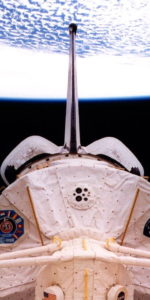
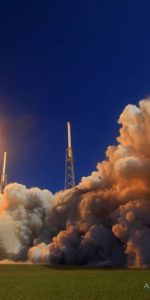
Aware that the link site to this morning’s launch is still in countdown because was reporting launch time as 11:30 vs. 10:30 actual?!
This all makes those who wanted smaller LVs look a bit foolish.
We are seeing more heavy-weight payloads–and not just for Atlas:
http://www.spacedaily.com/reports/Arianespace_makes_history_on_its_latest_Ariane_5_mission_999.html
I want to see SLS launch something like GLOBIS
http://www.astronautix.com/graphics/e/eneukp.gif
http://www.astronautix.com/graphics/g/globis91.jpg
That or a comeback of the Orbital Antenna farm concept
http://adsabs.harvard.edu/abs/1977AsAer..15…20E